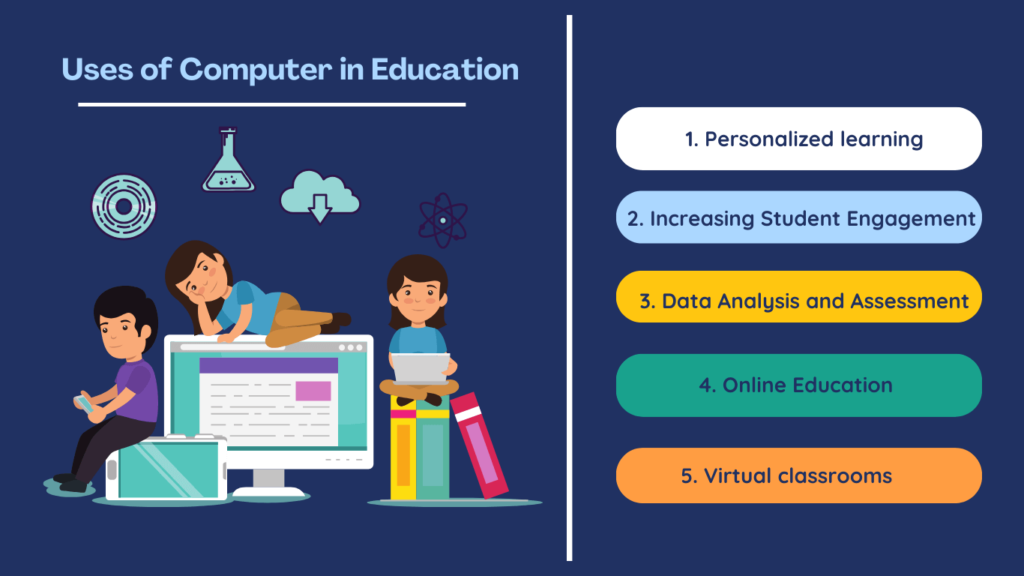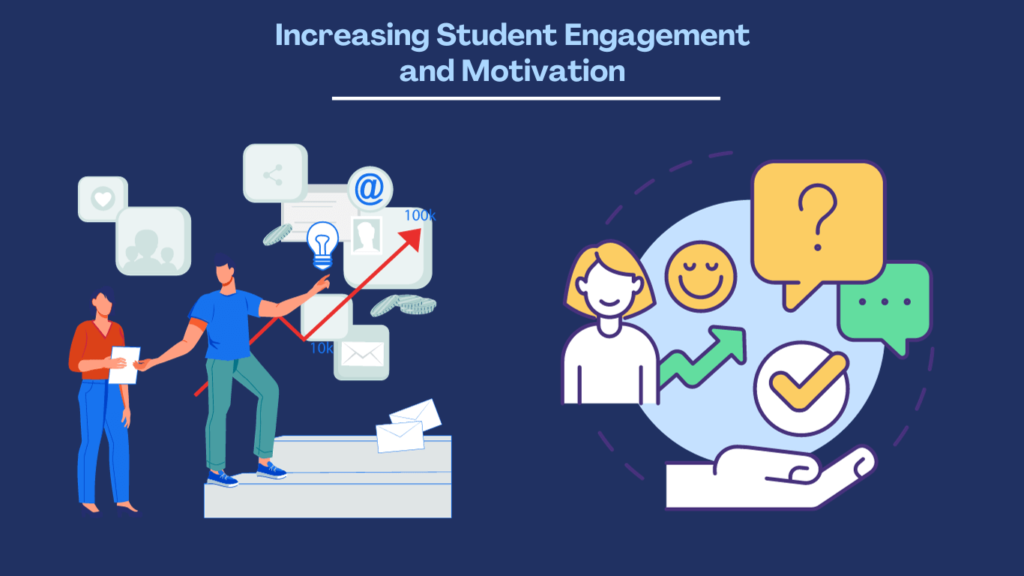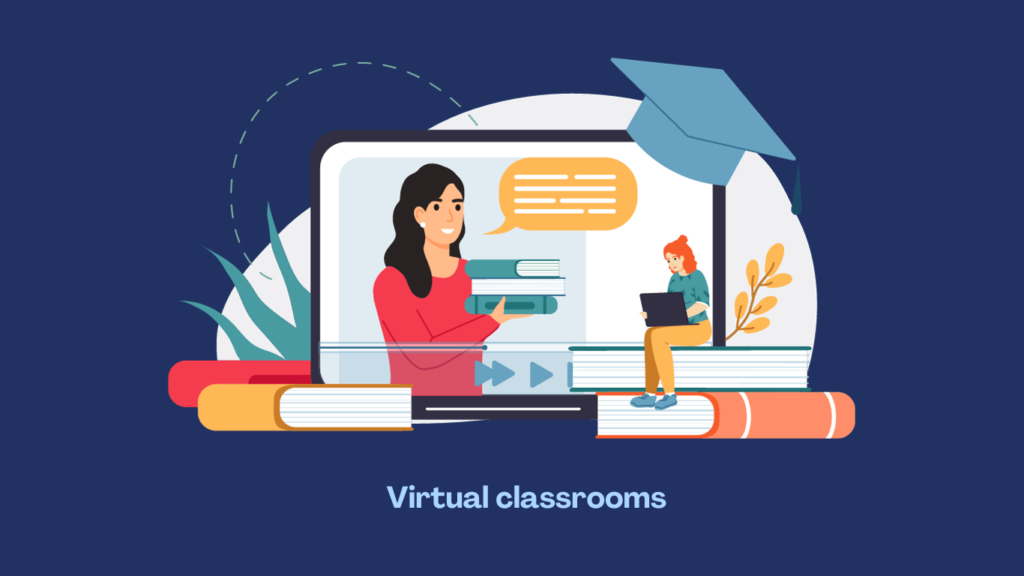Uses of Computer in Education: Today, computers have become ubiquitous in classrooms and have revolutionized the way we teach and learn. In this article, We will explore the many uses of computers in education, from personalized learning and adaptive technologies to online education and distance learning.
Application of Computer in Business

The Uses of Computer in Education
1. Personalized learning and adaptive technologies
One of the most significant benefits of computers in education is personalized learning. Adaptive technologies have made it possible for students to learn at their own pace, with programs that adjust to their individual learning needs.
With the help of adaptive technologies such as learning management systems, online quizzes, and interactive simulations allow students to engage with the material in a way that is meaningful and relevant to them.
For example, a student who is interested in science can explore virtual labs that allow them to conduct experiments and observe phenomena that would be impossible to replicate in a traditional classroom setting.
2. Increasing Student Engagement and Motivation
Computers have also proven to be effective in increasing student engagement and motivation. Traditional lectures can be dull and monotonous, but computer-based activities, such as gamification, can make learning fun and exciting.

Gamification involves using game-like elements, such as points, badges, and leaderboards, to encourage students to participate and engage with the material. With traditional paper-based assignments, students may have to wait days or even weeks to receive feedback on their work.
3. Data Analysis and Assessment
Teachers can use this data to identify areas of strength and weakness and adjust their teaching accordingly. Schools can also use this data to evaluate their programs and make data-driven decisions that will improve student outcomes.
Computers are also invaluable for data analysis and assessment. Computers are equipped to handle large amounts of data and can provide insights that would be impossible to obtain manually. For example, learning management systems can track student progress and provide detailed reports on their performance
4. Online Education and Distance Learning
With the internet, students can access educational resources from anywhere in the world, allowing them to learn at their own pace and on their own schedule. Online education has also made it possible for students to earn degrees and certifications without ever setting foot in a traditional classroom.

Online Education and Distance Learning have opened up educational opportunities for people who may not have had access to them otherwise, such as those who live in remote areas or who have work or family obligations that prevent them from attending traditional classes.
5. Enhancing Teaching and Learning
Computers have also enhanced teaching and learning in traditional classroom settings. Interactive whiteboards, for example, allow teachers to create engaging and interactive lessons that incorporate multimedia elements such as videos, images, and audio.
Teachers can also use computers to create digital portfolios for their students, allowing them to showcase their work and progress throughout the year. This provides a more comprehensive and authentic assessment of student learning than traditional paper-based assessments.
6. Empowering Students with Digital Skills
Computers are also empowering students with digital skills that are essential for success in the 21st century. The ability to use technology is no longer a luxury but a necessity in most professions. By incorporating technology into the classroom, students are learning valuable skills that will prepare them for the workforce.
For example, students can learn how to use productivity software such as Microsoft Office, which will be useful in almost any profession. They can also learn coding and programming skills, which are in high demand in the tech industry.
7. Virtual classrooms and online education
Virtual classrooms are another way that computers are being used to revolutionize education. Virtual classrooms allow students to attend classes from anywhere in the world, as long as they have an internet connection.

Virtual classrooms also provide a more immersive and engaging learning experience than traditional classrooms. Students can interact with their classmates and instructors in real time, and participate in activities and discussions that are relevant and meaningful to them.
8. Access to educational resources and information
Computers are providing students with access to educational resources and information that would have been impossible to obtain in the past. The internet has made it possible for students to access vast amounts of information on any topic, from anywhere in the world.
Online libraries, databases, and repositories provide students with access to scholarly articles, books, and other resources that can enhance their learning and understanding of complex concepts. This access to information is leveling the playing field and providing students with opportunities that would have been impossible to obtain in the past.
Conclusion: Uses of Computer in Education
In conclusion, Computers have transformed education in ways that were once thought impossible. From personalized learning and adaptive technologies to online education and virtual classrooms, computers are providing students with unprecedented access to educational resources and opportunities.
As educators, we must continue to harness the power of computers to improve student outcomes and prepare them for success in the 21st century. By incorporating technology into our classrooms and pedagogical practices, we can ensure that our students are prepared to meet the challenges of an ever-changing world.
